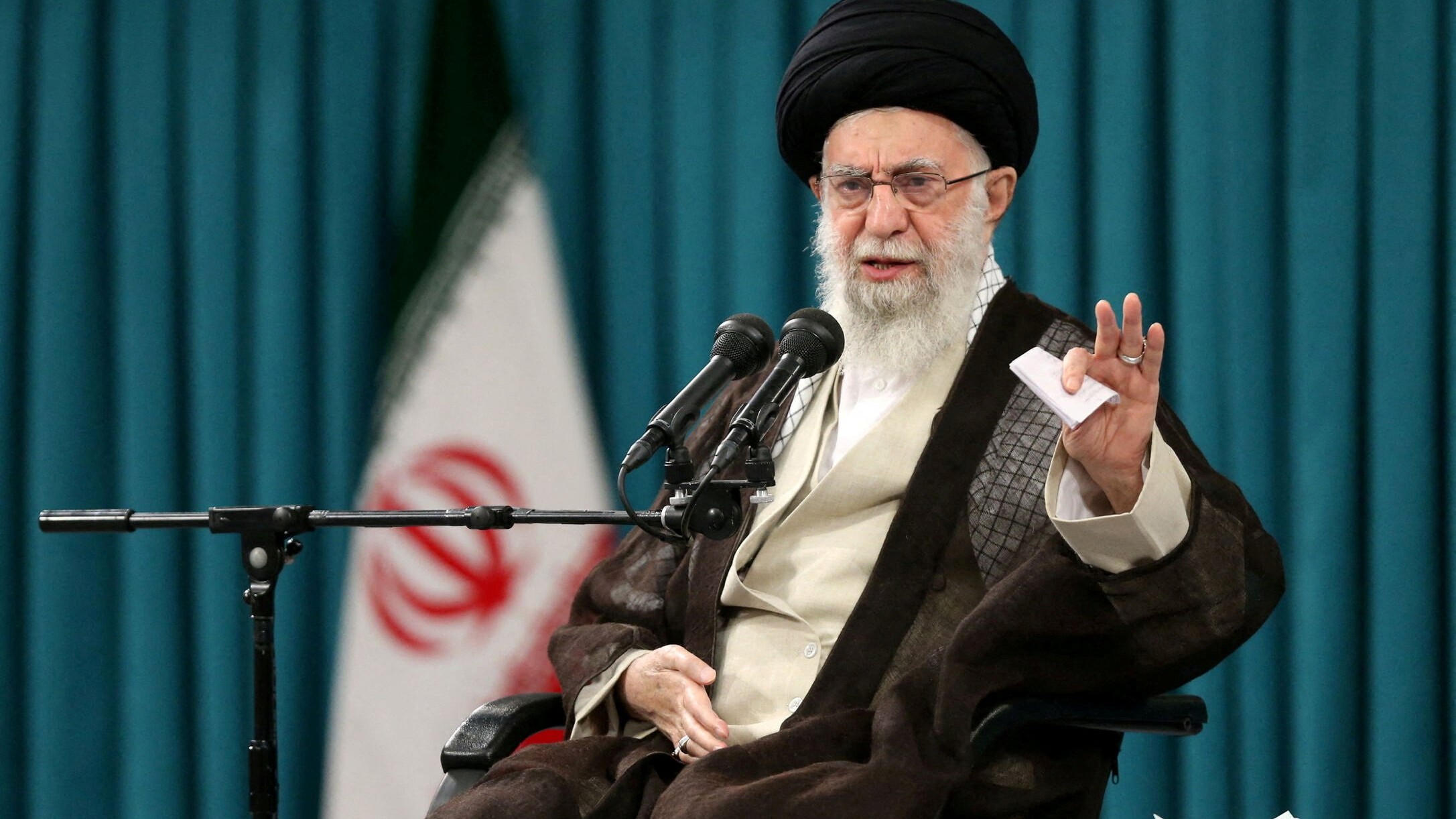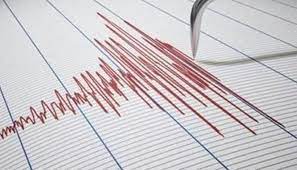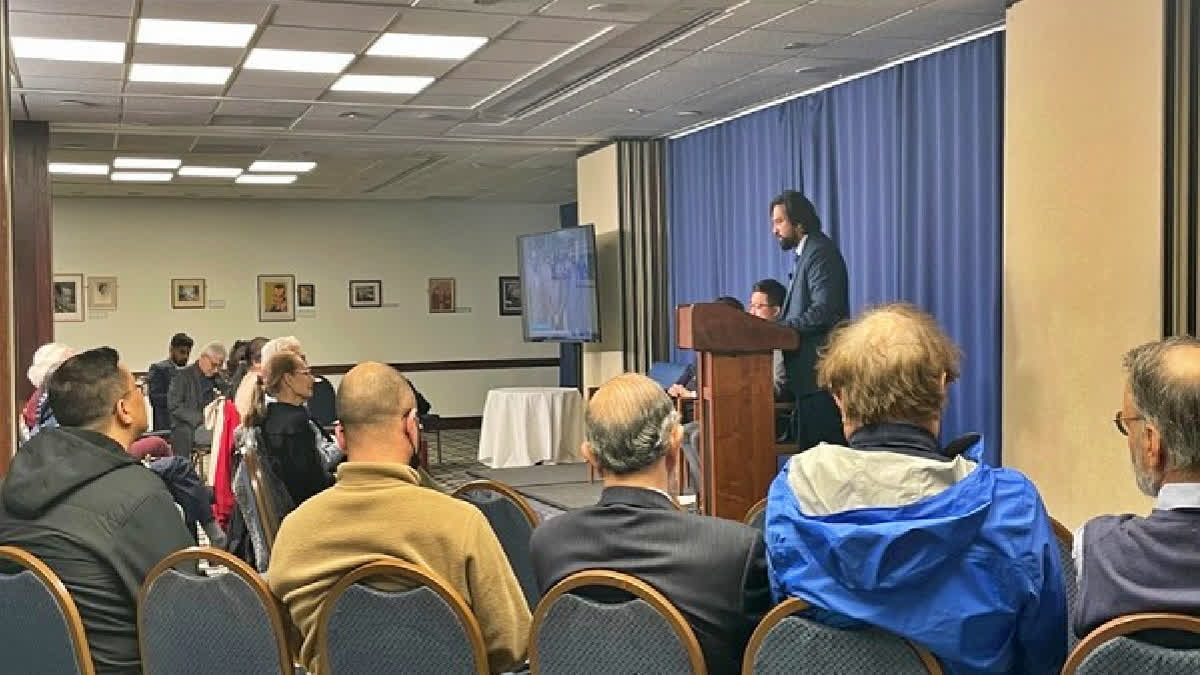Khamenei’s Calculated Omission: Decoding Iran’s Selective Fury & the Escalating Shadow War
By: Javid Amin | 23 June 205
The Echo of Silence in the Aftermath
The dust still hung heavy over the shattered remains of Fordow, Natanz, and Isfahan when Iran’s Supreme Leader, Ayatollah Ali Khamenei, broke his silence. Yet, the content of his message sent shockwaves nearly as profound as the bunker-buster bombs themselves. In a stark, deliberate omission that spoke volumes, Khamenei’s statement, broadcast via his official X account, focused laser-like fury on Israel, branding its actions a “grave mistake” and a “major crime” demanding punishment. Conspicuously absent? Any mention whatsoever of the United States, the nation that had just launched the most significant conventional military strike on Iranian soil in history, obliterating core national security infrastructure under the banner of “Operation Midnight Hammer.” This selective targeting isn’t an oversight; it’s a meticulously calculated signal in a perilous high-stakes game, revealing Tehran’s immediate strategy and setting the stage for the next, potentially more explosive, phase of the conflict. This analysis dissects Khamenei’s words, the context of Trump’s threats, the fractured global response, and the ominous pathways forward.
The Strategic Silence – Why Ignore the Elephant in the Room?
Khamenei’s omission of the US attack is a masterclass in strategic ambiguity and pragmatic threat assessment. It reflects a complex calculus driven by several key factors:
-
Avoiding the Unwinnable Direct Confrontation: Iran’s military, while formidable regionally, is acutely aware it cannot win a head-to-head conventional war against the full might of the United States. Directly naming, threatening, and retaliating against the US would force Tehran down a path likely ending in regime devastation. Silence on the US attack provides crucial diplomatic and operational wiggle room.
-
Preserving the “Resistance Axis” Narrative: Iran’s regional power is built on its leadership of the “Axis of Resistance” (Hezbollah, Houthis, Iraqi militias, Hamas/PIJ). Framing the conflict exclusively as an Israeli aggression (“Zionist enemy”) solidifies this narrative, rallying domestic support and regional proxies. Portraying the US strike solely as an extension of Israeli influence (a common Tehran trope) maintains this focus without forcing a direct clash with Washington.
-
Maintaining Potential Diplomatic Channels (with the US): Despite the attack, Iran’s regime is deeply pragmatic. Leaving the US unmentioned, while condemning the act internationally, keeps open the faint possibility of future negotiations or de-escalation channels with Washington, especially if the US political landscape changes. Directly threatening the US slams these doors shut.
-
Enabling Plausible Deniability for Retaliation: By focusing solely on Israel, Khamenei signals that Iran’s retaliation will primarily, if not exclusively, target Israeli interests. This allows Iran to unleash its proxy network and potentially direct asymmetric attacks (cyber, covert ops) against Israel while maintaining a facade of not directly retaliating against the US, potentially limiting US escalation.
-
Domestic Management: Acknowledging the devastating US strike on national sacred sites (nuclear program) is a severe blow to regime prestige. Focusing intense, unadulterated fury on a historically reviled enemy (Israel) is a safer outlet for domestic rage, helping to unify the population and deflect blame from potential regime failures in protecting the facilities.
“A Grave Mistake” & “Major Crime” – The Israeli Focus Explained
Khamenei’s language regarding Israel is deliberate and incendiary:
-
“Grave Mistake” (Khataye bozorg): This frames Israel’s actions (presumably the pre-strike campaign degrading Iranian air defenses and potentially other covert actions) as fundamentally misguided and strategically foolish, implying Israel miscalculated Iran’s resolve and capacity for response. It suggests Israel triggered a chain reaction it cannot control.
-
“Major Crime” (Jenayat-e azeem): This escalates the rhetoric significantly, assigning moral and legal culpability. It positions Israel as an outlaw actor, justifying Iran’s promised punishment under international norms (even if hypocritically, given Iran’s own actions).
-
“It Must Be Punished—and It Is Being Punished. It Is Being Punished Right Now”: This is the core message. It serves multiple purposes:
-
Immediate Deterrence Signal: Assures the Iranian public and the “Resistance Axis” that retaliation is already underway, countering any perception of weakness.
-
Vague Threat: The lack of specificity (“it is being punished”) is intentional. It could refer to ongoing proxy activities, imminent attacks, or cyber operations already in progress, keeping Israel (and the world) guessing and on edge.
-
Psychological Pressure: Creates a climate of fear and anticipation within Israel.
-
Legitimizing Future Escalation: Sets the narrative that any Iranian or proxy action against Israel is merely retribution for Israel’s prior “crime,” not unprovoked aggression.
-
Trump’s Bully Pulpit – Maximalist Demands and Threats
President Trump’s White House statement stands in stark contrast, reflecting a fundamentally different worldview and strategy:
-
Framing the Objective: “Destruction of Iran’s nuclear enrichment capacity and a stop to the nuclear threat…” This is unambiguous. The goal wasn’t delay or deterrence through punishment; it was the physical annihilation of key capabilities. This maximalist aim significantly reduces the space for diplomatic off-ramps.
-
Characterization of Iran: “The bully of the Middle East” and “the world’s number one state sponsor of terror.” This dehumanizing and accusatory language demonizes the Iranian regime, justifying extreme action to his domestic base and allies, and making negotiations seem appeasement of evil.
-
The Ultimatum: “Iran… must now make peace. If they do not. Future attacks would be far greater and a lot easier.” This is not an invitation to talks; it’s a demand for capitulation.
-
“Make Peace”: Vague and undefined. Does it mean complete abandonment of nuclear ambitions? Cessation of all support for proxies? Regime change rhetoric? The ambiguity itself is a tool of pressure.
-
“Far Greater… Easier”: A chilling promise of overwhelming, potentially unrestrained, future force. The “easier” implies degraded Iranian defenses or US willingness to use even more destructive tools. This directly fuels Iranian paranoia about regime survival and incentivizes drastic countermeasures.
-
-
Dissonance with Pentagon: While SecDef Hegseth emphasized the US did not seek war or regime change, Trump’s rhetoric (“bully,” “#1 state sponsor of terror,” “must make peace”) implicitly demands fundamental change in Iranian behavior or leadership, aligning more with regime change objectives. This contradiction creates confusion and undermines the Pentagon’s calibrated message.
The Global Chorus – A Fractured International Response
The international community reacted with predictable division, reflecting deep geopolitical fissures:
-
Western Allies (Conditional Backing):
-
United Kingdom, Australia: Offered public support for the US action, framing it as a necessary response to Iranian aggression and nuclear proliferation, likely based on shared intelligence briefings highlighting Iranian advances. However, support may be tempered privately by fears of uncontrollable escalation.
-
European Union (E3 – UK, France, Germany): While the UK backed the strike, France and Germany likely issued more cautious statements, condemning the escalation while acknowledging concerns over Iran’s nuclear program. The EU as a whole faces a crisis: the JCPOA is dead, diplomacy is in ruins, and they are caught between a belligerent US and a vengeful Iran, with significant economic and security interests at stake. Calls for restraint will be intense but likely ineffective.
-
Canada, Japan, South Korea: Expressed serious concern, urged de-escalation, but avoided strong condemnation of the US, reflecting their security dependencies. Focus will be on protecting citizens and economic interests.
-
-
Condemnation & Accusations (Russia-Led Bloc):
-
Russia: Issued strong condemnation, labeling the attack a “blatant violation of international law” and “reckless adventurism.” Moscow sees an opportunity to solidify its alliance with Tehran, potentially offering military assistance (air defense systems, reconstruction aid) and diplomatic cover at the UN. It also benefits from higher oil prices.
-
China: Expressed “serious concern” and called for “maximum restraint,” emphasizing the need to “preserve the JCPOA framework.” China’s primary concern is stability to protect its massive energy imports through Hormuz and Belt and Road investments. It will work to prevent wider war but will firmly oppose the US unilateralism, positioning itself as the responsible power.
-
Turkey: Condemned the US strike as a violation of sovereignty and a dangerous escalation. Ankara walks a tightrope, opposing Iranian nuclear weapons but also deeply distrusting US intentions and Israeli actions, while managing its own complex relations with Russia and regional actors.
-
Pakistan: Issued a strong condemnation, citing violation of sovereignty and international law, and expressing solidarity with Iran. This reflects historical ties, shared Shia minority concerns (to a degree), and wariness of US unilateralism in the region.
-
Venezuela, Syria, Others: Issued predictable condemnations supporting Iran, reinforcing the anti-US bloc.
-
-
The Non-Aligned & Regional Players: Many nations in Africa, Southeast Asia, and Latin America issued generic calls for de-escalation and respect for international law, primarily concerned with the economic fallout (oil prices, supply chains). Gulf Arab states (Saudi Arabia, UAE) remained conspicuously quiet or issued very cautious statements, privately relieved at the strike on Iran’s nuclear program but terrified of being targets for retaliation and caught in a regional conflagration.
Lawfare at the UN – Iran’s Diplomatic Counteroffensive
Iran’s swift move to call for an emergency UN Security Council (UNSC) meeting is a critical element of its response strategy:
-
Invoking International Law: Accusing the US of violating the UN Charter (Article 2(4) prohibition on the use of force) and international law is central. Iran will argue:
-
The attack was an unprovoked act of aggression against a sovereign state.
-
It constituted a violation of the Non-Proliferation Treaty (NPT), as it targeted peaceful nuclear facilities (despite evidence of weaponization potential).
-
The US failed to exhaust peaceful means or gain UNSC authorization.
-
-
“Reserves All Options”: This standard diplomatic phrasing is a veiled threat. It signals Iran’s right to self-defense under Article 51 of the UN Charter, justifying its promised retaliation while keeping the specific form ambiguous. It warns the US and its allies of potential responses ranging from asymmetric warfare to missile strikes.
-
Seeking Legitimacy & Isolation of the US: Iran aims to portray itself as the victim of unlawful aggression, rallying international sympathy (particularly from the Global South and Russia/China) and isolating the US and its supporting allies. Even if no resolution passes (due to US/UK/France veto), the debate serves as a global platform to condemn the US and justify Iran’s future actions.
-
Highlighting Hypocrisy: Iran will contrast the US attack with its own actions (or alleged lack of imminent threat), pointing to past US interventions (Iraq WMDs) and Israeli actions (non-signatory to NPT, undeclared arsenal) to paint a picture of Western double standards.
-
Diplomatic Cover for Retaliation: By formally declaring the US attack illegal and reserving its rights, Iran lays the groundwork to claim its retaliation, especially against Israel or US assets via proxies, is legitimate self-defense under international law.
The Looming Retaliation – Pathways of Punishment
Khamenei’s promise that punishment “is being punished right now” points to immediate and likely sustained action. The focus on Israel suggests several primary vectors:
-
Activation of the “Axis of Resistance”:
-
Hezbollah (Lebanon): The most potent threat. Unleashing its vast arsenal (100,000+ rockets, including precision-guided missiles) against Israeli cities and military targets. This could trigger a devastating, full-scale Israel-Lebanon war.
-
Houthis (Yemen): Intensifying missile and drone attacks targeting:
-
Israeli Territory: Attempting to strike Eilat or other southern cities.
-
Israeli-linked Shipping: In the Red Sea and Bab-el-Mandeb.
-
Saudi Arabia/UAE: Critical infrastructure (oil facilities, airports), punishing Gulf states perceived as enabling Israel/US.
-
-
Iraqi Militias (Kataib Hezbollah, etc.): Escalating rocket, drone, and potentially complex attacks on:
-
US Bases: Erbil, Ain al-Asad, others in Iraq and Syria, aiming to inflict US casualties.
-
Israeli Interests: Diplomatic missions or commercial assets in the region (if any).
-
-
Hamas & Palestinian Islamic Jihad (Gaza): Reigniting conflict with rocket barrages and attacks from Gaza, forcing Israel to fight on multiple fronts.
-
-
Asymmetric & Covert Operations:
-
Cyber Warfare: Major disruptive or destructive attacks on Israeli critical infrastructure (power grid, water systems, finance, transportation). Potential targeting of US infrastructure indirectly or via non-attributable means.
-
Terrorist Plots: Attempts by IRGC-Quds Force or proxies to conduct attacks against Israeli or Jewish targets globally.
-
Assassinations: Targeting Israeli officials, security personnel, or scientists abroad.
-
Maritime Attacks: Harassment or attacks on Israeli shipping in the Persian Gulf, Red Sea, or Mediterranean using speedboats or mines.
-
-
Direct but Limited Strikes (Lower Probability, Higher Risk):
-
Ballistic/Cruise Missiles: Launching salvos from Iranian territory targeting Israeli military installations (e.g., Nevatim airbase, Dimona) or symbolic sites. This risks massive Israeli retaliation directly against Iran. Khamenei’s omission of the US makes this slightly more plausible as it avoids directly challenging the US superpower, but remains extremely dangerous.
-
-
The Strait of Hormuz Wildcard: While retaliation is focused on Israel, the risk of Hormuz disruption remains high, either accidentally (escalation spilling over) or intentionally if Iran feels existentially threatened later. This would be a global economic weapon.
Escalation Risks & The US-Israel Nexus
Khamenei’s strategy carries immense risks:
-
Israeli Overreaction: A major Hezbollah rocket barrage, successful precision strike on a sensitive site, or mass casualties could trigger an overwhelming Israeli response, potentially expanding to direct strikes inside Iran, dragging the US closer to the brink.
-
Proxy Spillover: Attacks by Iraqi militias causing significant US casualties could force a direct US military response against Iranian targets in Iraq or even Iran itself, shattering Khamenei’s attempt to avoid US confrontation.
-
Miscalculation: In the fog of war and multiple actors, a cyberattack, covert op, or naval incident could be misattributed or escalate uncontrollably.
-
Trump’s “Far Greater” Threat: If Iranian proxies inflict significant damage on Israel or US interests, Trump’s promise of “far greater” US attacks becomes highly likely, potentially targeting IRGC leadership, naval assets, or broader military infrastructure, igniting direct conflict Khamenei seeks to avoid.
The US-Israel alliance is now the core target. Khamenei bets that punishing Israel severely will satisfy domestic rage, demonstrate resolve to the “Axis,” and potentially fracture the US-Israel bond if the cost to America (economy, casualties) becomes too high. Trump and Netanyahu, however, are likely to present a united front, viewing Iran’s actions as validation of their pre-emptive strike.
Bottom-Line: The Perilous Calculus of Selective Fury
Ayatollah Khamenei’s deliberate omission of the United States in his fiery response to the destruction of Iran’s nuclear facilities is not a sign of weakness, but a cold, calculated gamble. It is a strategy born of necessity, recognizing the existential danger of direct confrontation with a superpower while harnessing the potent forces of asymmetric warfare and ideological fervor focused on the “Zionist enemy.” By framing the conflict solely through the lens of Israeli aggression, Khamenei aims to unify domestic opinion, rally his regional proxies, justify a ferocious retaliation against Israel, and potentially preserve fragile diplomatic off-ramps with Washington.
However, this strategy is fraught with peril. It relies on the ability to control powerful proxy forces across multiple countries, to calibrate retaliation severe enough to satisfy demands for vengeance without triggering an overwhelming Israeli or US counterstrike that shatters the regime. Donald Trump’s maximalist rhetoric and threats of “far greater” force if Iran doesn’t capitulate (“make peace”) create a volatile environment where de-escalation is anathema. The global community is fractured, with Russia and China eager to exploit US isolation while Western allies nervously navigate the fallout.
The call for a UNSC meeting is Iran’s opening move in the legal and diplomatic battleground, seeking to legitimize its victimhood and future actions. Yet, the real conflict will be waged in the shadows and the shattered streets of proxy battlegrounds. Hezbollah’s rockets, Houthi drones, militia attacks on US bases, and covert operations worldwide are the instruments of Khamenei’s promised punishment. The world now holds its breath, witnessing a dangerous experiment: can a nation absorb a catastrophic blow from one superpower and redirect its fury solely against the ally, navigating the razor’s edge between devastating retaliation and regime survival? The success or failure of this gamble will determine whether the aftermath of Operation Midnight Hammer descends into a managed, albeit violent, shadow conflict or erupts into the regional inferno all fear. Khamenei has chosen his target; the terrifying uncertainty lies in how far the retaliation will go, and how the targeted – and the silent superpower – will respond.



